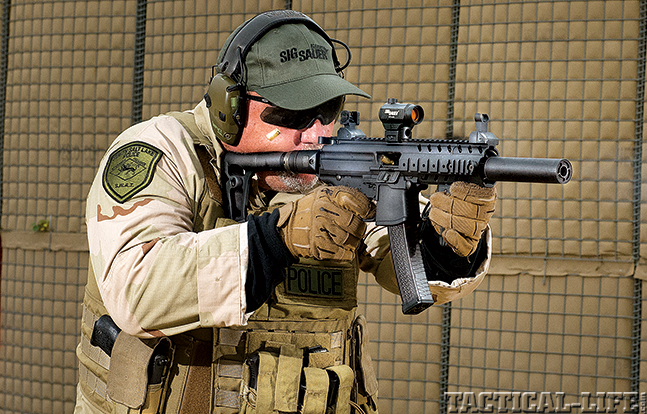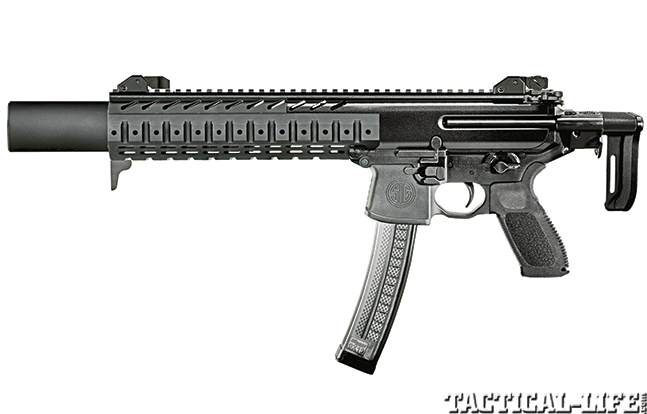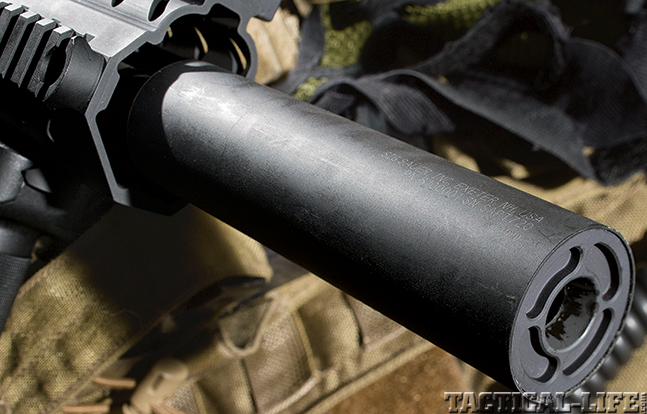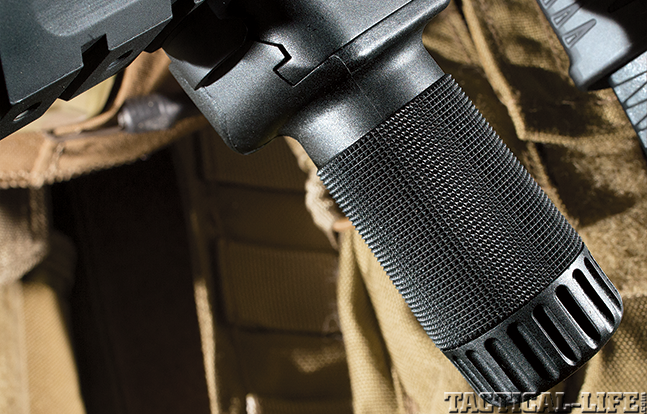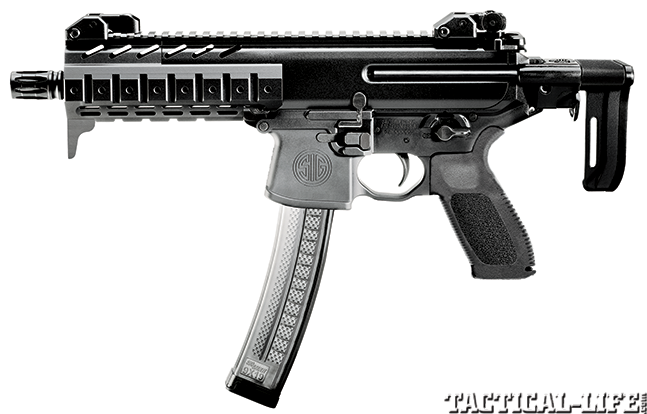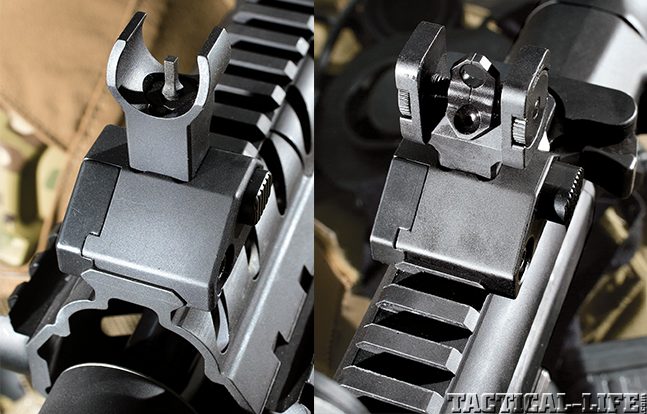Early on in my police and tactical team career, “high speed” referred to how you drove—not the weapons or gear you fielded. Operators often made their own “nylon,” and tactics and training were ad hoc at best. Training experts were few and far between. Teams just did not share much, so you were kind of on your own. Shortly after being placed in charge of my agency’s tactical team, I made it my focus to get as much training as possible. Thankfully, a friend of mine owned a gun store, allowing me to get a second job to facilitate out-of-state training at my own expense. Like most agencies in my area, “outside” training meant travel to the next county, and that was about it. Since we fielded Heckler & Koch MP5 submachine guns at the time, HK seemed the best place to start when it came to training. After I worked my way through HK’s Master Submachine Gun training course, I passed that knowledge on to my team. My operators began to love the platform and realize its effectiveness. To my amazement, however, in each subsequent SWAT school, the guru in charge told me my submachine gun was “obsolete” and must be replaced by a rifle.
- RELATED: Sig Sauer’s SIG556R Is Built on Reliability, Versatility
- RELATED: 10 Best Rifle Features of the Sig Sauer SIG556xi
I’ve spent close to three decades in the police world, and many things termed “obsolete” seem to still be around. Unfortunately, obsolescence is more a product of what is popular, not practical. Fortunately, time seems to prove that, with more than a few weapons coming back after being replaced by the next greatest thing. It’s true of pistols and shotguns, and it’s also true of the submachine gun.
Contrary to popular belief, submachine guns remain a viable system for many different applications. Some agencies remain unconvinced of the need for rifles, or politics preclude them from fielding them. Submachine guns are a solid replacement. Truly urban teams who prefer pistol calibers still use submachine guns. Their compact size makes them a good choice for motor units or those working in close quarters. Detectives with my agency continue to use .45 caliber submachine guns with great success. Protective details often prefer pistol-caliber weapons for concealment, ease of use, efficiency and firepower, especially when suppressed.
Advertisement — Continue Reading Below
While the MP5 remains the most prolific given its time in service, several other submachine guns exist today, including the HK UMP (the MP5’s replacement). Several other companies have developed similar systems, and there are always the AR-type rifles chambered in pistol calibers. Most of the newer systems are almost exotic, and the AR-based systems have proven to be less than popular for a number of reasons. What today’s operators really needed was a true submachine gun, built from the ground up, that utilizes all of the advantages of the AR platform without its problems. It looks like Sig Sauer has just the ticket with its next-generation MPX.
Gun Details
Advertisement — Continue Reading Below
The MPX is available in a number of configurations. The standard model that I was able to test has an 8-inch, threaded barrel. The MPX-P is configured as a pistol using the same 8-inch barrel with no stock. The MPX-SD model utilizes an 8-inch, ported barrel that is integrally suppressed. For those in need of a shorter version, the MPX-K utilizes a 4.5-inch barrel. While offered in select-fire, Sig Sauer is also doing a 16-inch version for the standard rifle market in semi-automatic verisons. All are available with either an aluminum or carbon-fiber forend, and a folding or collapsible buttstock.
The 9mm SIG-SD silencer is available for use on the threaded barrels. The standard 9mm SIG-SD is 3.9 inches long, and a longer version like the one I tested will soon be made available. Magazines are built specifically for the MPX by Lancer Systems, and they are available in 10-, 20- and 30-round capacities.
Sig Sauer’s MPX-C will have a specially designed muzzle brake that is permanently attached to the 8-inch barrel, making it a 16-inch-barreled weapon available for civilian purchase. Configured in semi-auto, it is still in the works and should hit the market as soon as it has made it through the BATFE approval process.
Advertisement — Continue Reading Below
The MPX utilizes Sig Sauer’s proven short-stroke gas piston system, configured specifically for this platform. The use of a fully closed and locked rotating bolt enhances its operation and safety. Barrels can be changed in the field to meet varying mission requirements, and the bolt holds open on the last round. Starting out in 9mm, the MPX is easily convertible to .357 SIG and .40 S&W. A monolithic upper receiver with an integral top rail allows for the use of any common AR-compatible sighting system, including red dots and holographic sights.
The MPX utilizes AR-style controls, which makes for minimal training and transition time. Any AR-compatible trigger can also be installed. The remaining controls are also in the AR style, including the magazine and bolt release, which are ambidextrous. The non-reciprocating charging handle is placed similarly to an AR’s, and it does not interfere with any rail-mounted accessories. While the excellent SIG516 pistol grip is used, any AR-based grip can be added. Stocks are interchangeable and can be configured based on mission needs.
Advertisement — Continue Reading Below
Range Time
I tested an early prototype of a standard 9mm MPX with a 6.5-inch barrel and a folding stock while I was at the Sig Sauer Academy. The stock folded to the left and snapped into place nicely. You will be able to order a production gun that both folds and collapses. The prototype 9mm SIG-SD silencer was attached to the threaded barrel; it measured about 5 inches in length—just a bit longer than the standard model. For targeting, I had flip-up AR-style backup iron sights as well as a Sig Mini Red Dot Sight. Not only was this MPX a prototype, but it had seen some serious range time with an estimated 10,000-plus rounds of all types of ammunition run through it. I used both 20- and 30-round magazines. For ammunition, I used Speer 124-grain FMJ rounds. All of the testing was done in full kit, minus a helmet.
After a few rounds to find the proper hold, I was able to stack three rounds on top of each other on the head of a steel silhouette target at roughly 40 yards. Using a similar steel target with a 4-inch swinging “hostage” plate, I was able to pretty much move the swinging portion back and forth at will. Shooting from roughly 20 yards off-hand, the MPX seemed to be as accurate as a rifle, more so than a submachine gun, creating one ever-larger hole in paper targets and a solid slab of lead on the steel targets. As expected, recoil was all but nonexistent, and the SIG- SD suppressor kept the SMG pretty much exactly where it was aimed with very little movement. The MPX is flat-out accurate, no matter the conditions.
Advertisement — Continue Reading Below
One of the equalizing factors with a submachine gun is the ability to administer controlled bursts on select-fire. While possible with a rifle, it can be very difficult with an SMG. The standard during the Master Submachine Gun and Hostage Rescue school at HK was putting four rounds into 0.75 inches while moving and firing on full-auto. With practice, failure drills consisted of getting nine rounds on target while on the move. Mimicking this standard, shooting doubles and triples with the MPX was a breeze. With a rate of fire exceeding 1,000 rpm, it’s easy to get a lot of rounds on target in short order. Shooting on the move, it was equally easy to keep multiple-round bursts on target. About the only thing the MPX would not do easily was allow for “singles” on select-fire. Honestly, that is a product of the rate of fire and the AR trigger. I could do it, but not consistently—it’s about the same with my M16 rifles. From a practical perspective, it is less an issue with these controls, as moving back to semi-auto is pretty easy, but it is something to be aware of. For the most part, trigger presses on select-fire will be doubles or more.
The AR platform seems to dominate the tactical world in America, and the MPX uses the same basic controls. It’ll be very seamless to move back and forth between an AR-type rifle and the MPX. The MPX’s reliability was also excellent, especially considering that my test gun was a prototype. Ejection was consistent and reliable. Magazines inserted easily and fit in my M4 magazine pouches. Sized very similarly to MP5 magazines, my guess is any of those would work very well.
Advertisement — Continue Reading Below
Final Notes
Suppressed, the MPX is almost completely ear safe (unless you’re shooting steel plates), and it’s easily usable on operations without hearing protection. Even heated up during sustained fire, there were no visible point-of-impact shifts. Because of the threaded barrel, the suppressor is easy to remove, making for a really compact package. The 13.5×1 LH thread pitch keeps the suppressor from coming loose under sustained automatic fire.
Its critical to remember that many officers these days have never seen an MP5 outside of video games. Most operators have only run one system (an AR), and the MPX is very easy to transition to. This allows a team to change weapons based on mission without learning a new manual of arms.
Advertisement — Continue Reading Below
The MPX’s folding stock made it possible to start from a concealed position one might use in a protective detail and move smoothly and easily to well-aimed shoulder fire—even while I was on the move. It may be the most versatile submachine gun produced in recent history.
Chambered in 9mm, the MPX is an excellent weapon, and moving to the .357 SIG will add some serious ballistics capabilities to the platform. Given how well the prototype worked, I am looking forward to the chance to work with the first production guns. If you are looking for a solid submachine gun, make sure you check out the MPX.
For more information, visit sigsauer.com or call 603-772-2302.
Advertisement — Continue Reading Below
